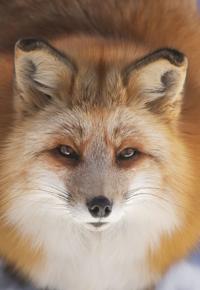There are 37 types of fox in the world, but only 12 are considered true foxes.
Foxes are part of the canid family, meaning they are related to wolves/coyotes/domestic dogs. Each fox has special adaptations for living in different climates. Arctic foxes have color changing coats, Fennec foxes have giant ears, and Swift foxes have speed. Let me take you on a quick journey around the world, to uncover the true meaning of a fox.
It’s no surprise the arctic houses one species of fox. You may be familiar with their color-changing coat that help’s them to camouflage themselves based upon the season. Arctic foxes are one of the only fox species that breeds twice a year instead of once a year. This is probably due to the low survival rate of their kits. Surviving in the arctic is difficult, to say the least.
North America is home to three fox species. The Swift fox is native to Colorado and can run faster than the fastest human. Being the smallest fox species in North America (weighing 3-7 pounds) they can reach speeds of over 30 miles per hour.
The Red fox is the most widespread fox species in the world. Fun fact: Red foxes are not always red. There are four main color phases of the red fox: red, silver, cross and white. You may find these naturally in the wild, but most often the color variations are due to breeding from fur farms (a whole different topic).
The Kit fox is another North American species that has larger ears for each dissipation. They also keep multiple dens to use at different times of the year.
There are two species of fox found strictly in Africa. The Pale fox lives in packs and digs dens over 40 feet underground.
The Cape fox has a unique hunting style of separating into groups of males and females. There are two fox species whose range extends from Africa to Asia: the Fennec fox and Ruppell’s fox. The Fennec fox is very well known for its extra-large ears, it is also the smallest canid species in the world (roughly three pounds). Unfortunately, fennec foxes are a victim of the exotic animal industry, often being kept as pets. The Ruppell’s fox matures at only 4 months old and can begin breeding at 1 year old.
That leaves us with four fox species that range from the Middle East through Asia. The Blansford fox has hairless paw pads, claws like a cat and a long bushy tail allowing them to jump and climb with ease. The Corsac fox will migrate in the winter and sometimes form small hunting packs.
The Bengal fox has been scarcely researched, but we do know their tail takes up 60% of their body length. The Tibetan Sand fox is quite the negotiator. Researchers have seen them persuade brown bears into hunting Pikas as a team, and convince wolves to share a carcass.
As you can see, foxes have not only adapted their physical characteristics to be better suited for their environment, but have learned how to change their behavior depending upon their surroundings. The vast differences between fox species suggests that they have been adapting for a long time. Recent studies have found fossils of foxes next to wolves. This suggests foxes could be more than 10 million years old.
A native of Wildomar, California, Ciera Garcia is an intern at Colorado Wolf and Wildlife Center in Divide. She has an associate’s degree in Biology and took a year break to save money for a bachelor’s degree. Garcia also enjoys working on cars.





 Your Privacy Choices
Your Privacy Choices